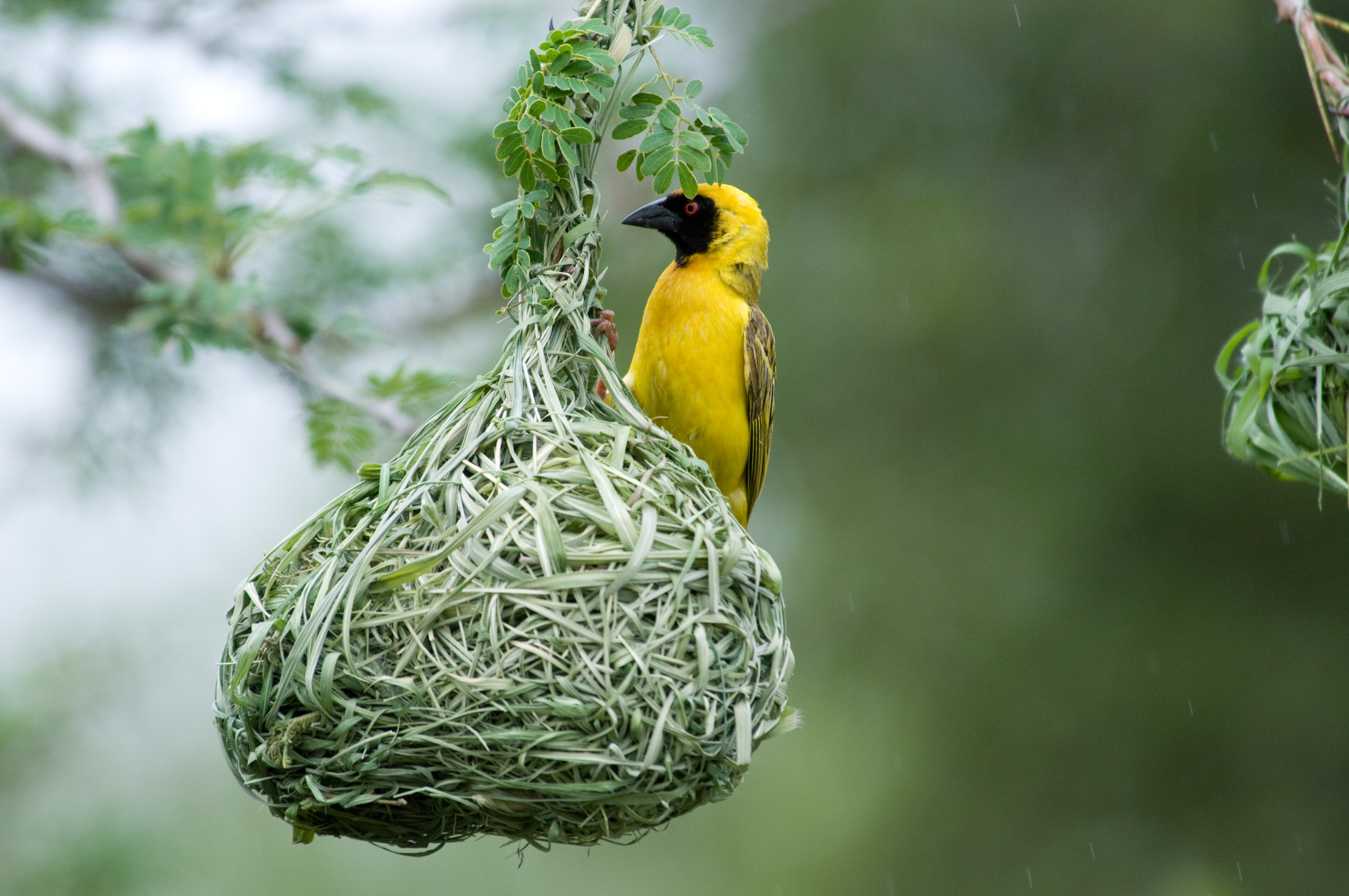- Southern Masked-Weaver
Taxobox
name = Southern Masked-Weaver
status = LC | status_system = IUCN3.1

image size = 350px
image caption =
regnum =Animal ia
phylum = Chordata
classis = Aves
ordo =Passeriformes
familia =Ploceidae
genus = "Ploceus "
species = "P. velatus"
binomial = "Ploceus velatus "
binomial_authority = Vieillot, 1819 The Southern Masked-Weaver or African Masked-weaver ("Ploceus velatus") is a resident breedingbird species common throughout southernAfrica .This weaver is very widespread and found in a wide range of habitats, including shrubland, savanna, grassland, open woodland, inland wetlands and semi-desert areas. It also occurs in suburban gardens and parks.
Description
The Southern Masked-Weaver is 11-14.5 cm long with a short, strong, conical bill and pinkish brown legs. The adult male in breeding plumage has a black face, throat and beak, red eye, bright yellow head and underparts, and a plain yellowish-green back,
The female has a pinkish-brown bill, brown or red-brown eye and is dull greenish-yellow, streaked darker on the upper back. The throat is yellowish, fading to off-white on the belly. The non-breeding male resembles the female but retains the red eye. The juvenile of this species is like the female.
The call is a harsh swizzling, similar to other weavers. It also utters a sharp "chuk" alarm note.
Behaviour
Breeding
The Southern Masked-Weaver nests in colonies, mainly from September to January. Males have several female partners, and build a succession of nests, typically 25 each season. The nests, like those of other weavers, are woven from reed, palm or grass. A female will line a selected nest with soft grass and feathers. The nest is built in a tree, often over water, but sometimes in suburbia. his weaver also nests in reeds.
Feeding
The Southern Masked-Weaver is usually seen singly or in small groups. It may also form larger flocks, alone or with other seed eating species. It eats insects, seeds and nectar, and will come to feeding tables.
References
* Ian Sinclair, Phil Hockey and Warwick Tarboton, "SASOL Birds of Southern Africa" (Struik 2002) ISBN 1-86872-721-1
* [http://www.birdlife.org.za/fieldguide/book/species_info.php?id=138 SASOL e-guide]
Wikimedia Foundation. 2010.
